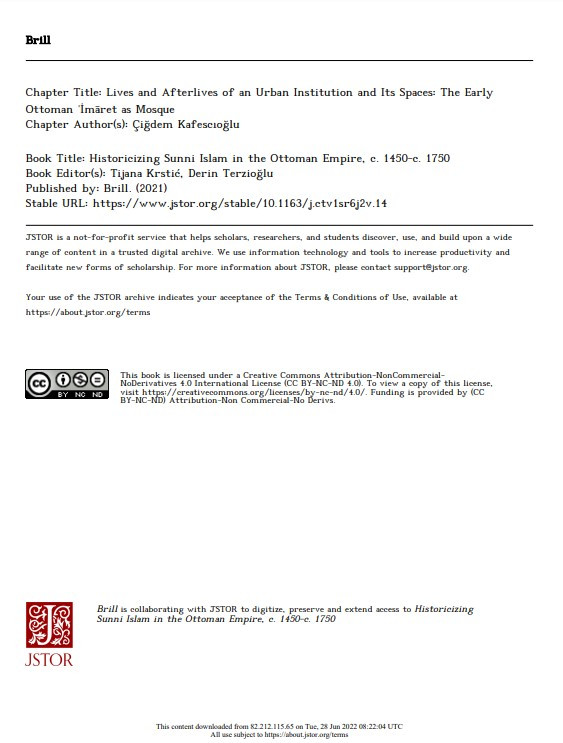
Since the architect and restorer Sedat Çetintaş argued in 1955 that “the Green Mosque and its likes are not mosques”1 the identity and functions of the buildings he was referring to, namely the “T-type” structures that are among the
most distinctive products of early Ottoman architectural culture, have been matters of debate. These edifices, widely dispersed in late medieval northwestern Anatolia and the Balkans and patronized in the early centuries largely by
sultans and military leaders of the frontier zones, had plural accommodative, social, and devotional uses. They were planned around a domed central hall, with flanking rooms and an eyvān (Ar. īwān) across the entrance beyond the
domed hall. The eyvān, a vaulted or domed hall that opens to the central domed space and is elevated by a few steps, was in most, but not all cases allocated to prayer. Their foundation deeds (waqfiyya) identify them as ʿimāret or zāviye (Ar. zāwiya), and their users as “comers and goers” (an expansive range of people in the tempestuous worlds of medieval Anatolia and Balkans), traveling dervishes, and the needy; in royal foundations, ulama, shaykhs, sayyids (sādāt), Quran readers, and preachers are recounted among beneficiaries. Their waqfiyyas make clear that the offering and consumption of food, social and religious ritual, and shelter provided to dervishes and travelers intersected in these buildings constructed outside the established urban cores, initially of Bithynian and Thracian cities
I agree to the terms outlined below:
You agree to upload and assign Mosqpedia Database the rights to use the content worldwide and in perpetuity across all current and future media platforms. Mosqpedia Database may edit, copy, adapt and translate your contribution.
The content will be distributed under the Creative Commons Attribution-Deed – Attribution-NonCommercial-NoDerivatives 4.0 International – Creative Commons
All data will be stored in line with data protection regulations.